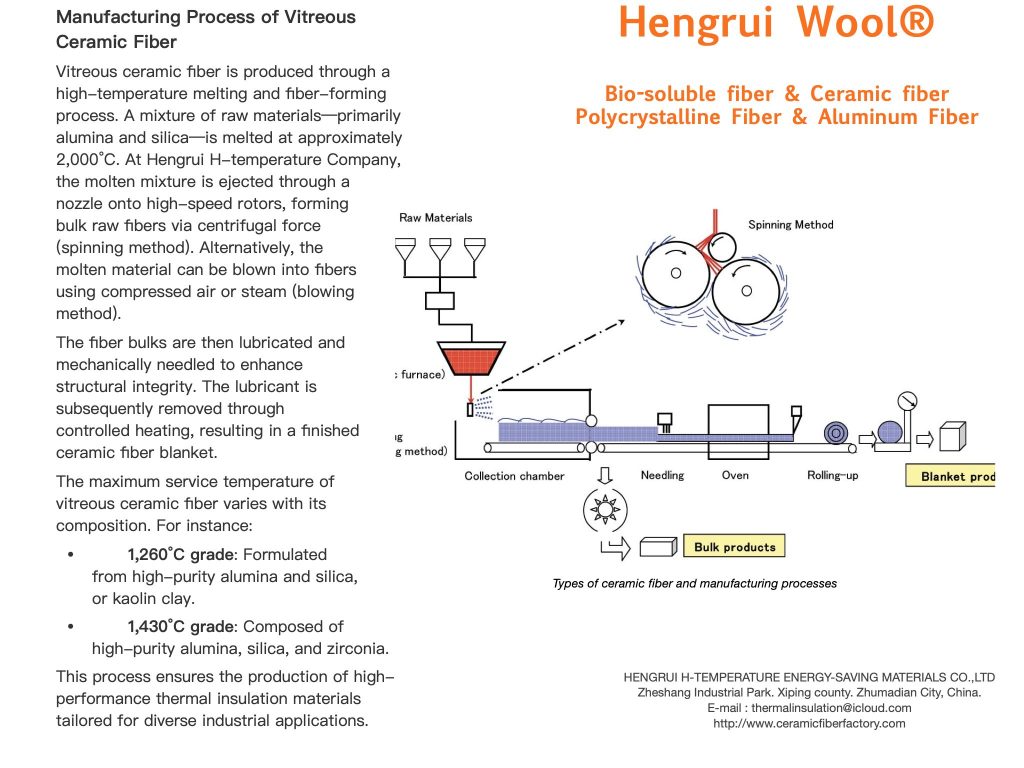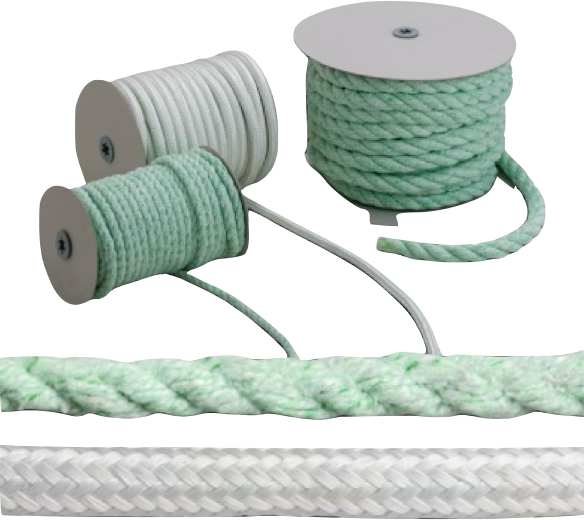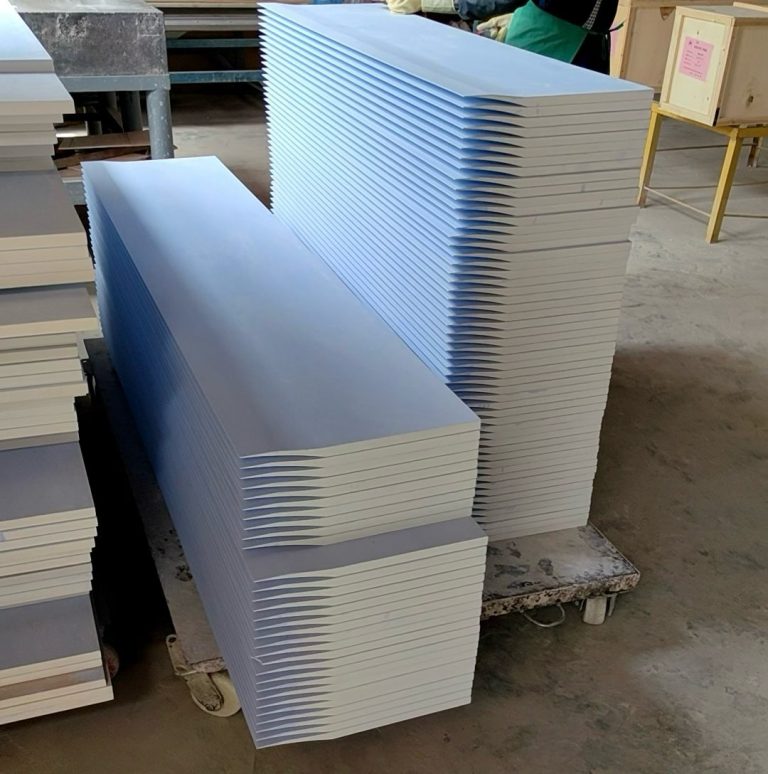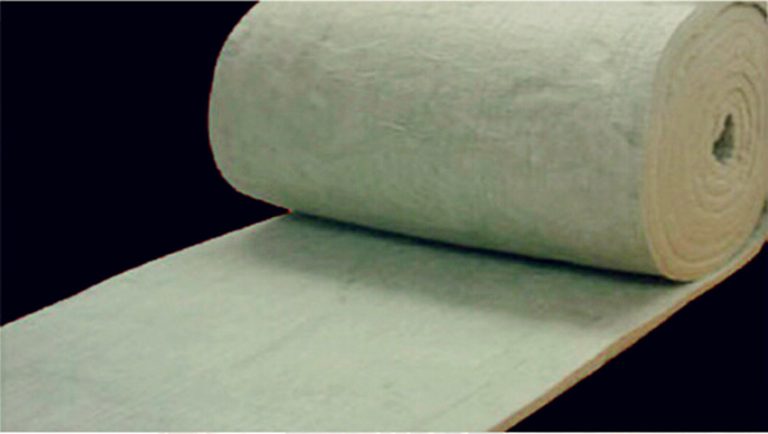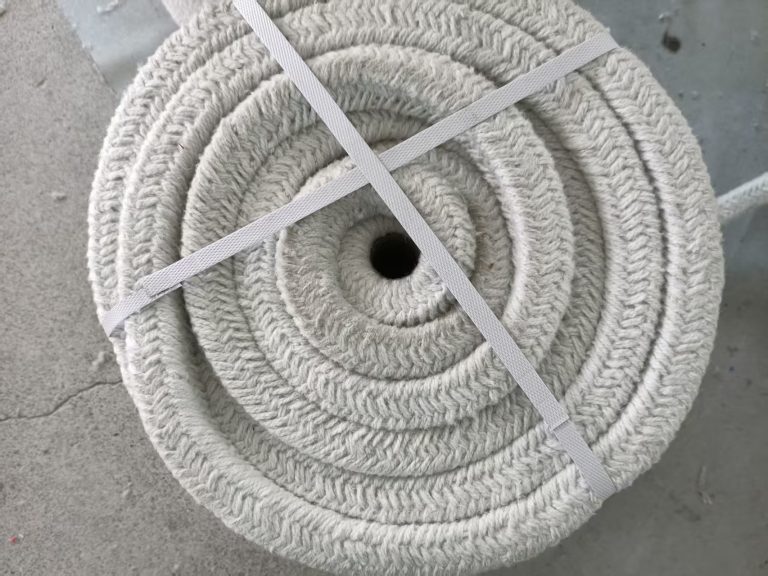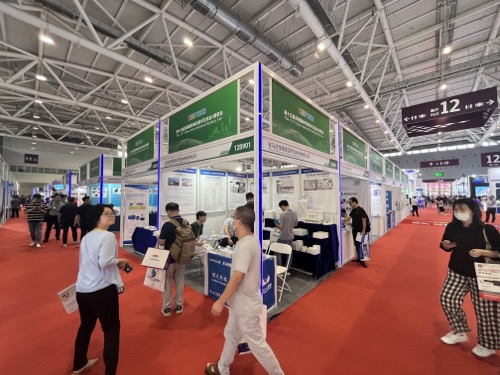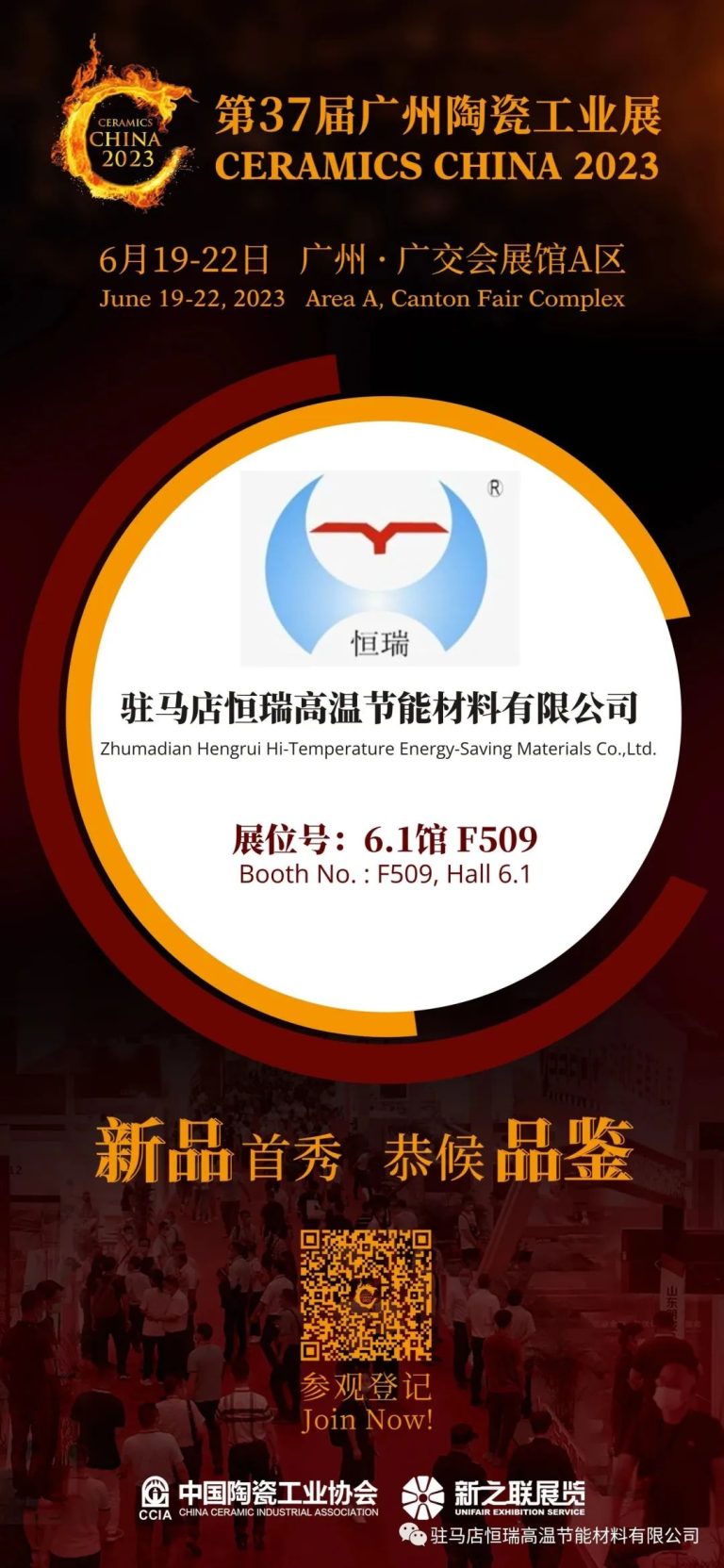What Is Vitreous Ceramic Fiber?
Vitreous ceramic fiber is a high-performance refractory material widely used in industrial furnaces, kilns, boilers, and thermal equipment. Known for its excellent thermal insulation, lightweight structure, and durability, vitreous ceramic fiber is a crucial material for industries requiring reliable high-temperature insulation solutions.
Raw Materials and Composition
The manufacturing of vitreous ceramic fiber starts with a precise blend of alumina (Al₂O₃) and silica (SiO₂) as the primary raw materials. Depending on the grade, zirconia (ZrO₂) may also be added to enhance thermal stability and service temperature.
1,430°C Grade: Contains a higher content of alumina, silica, and zirconia for superior resistance to extreme heat.
1,260°C Grade: Made from high-purity alumina and silica, sometimes using kaolin clay.
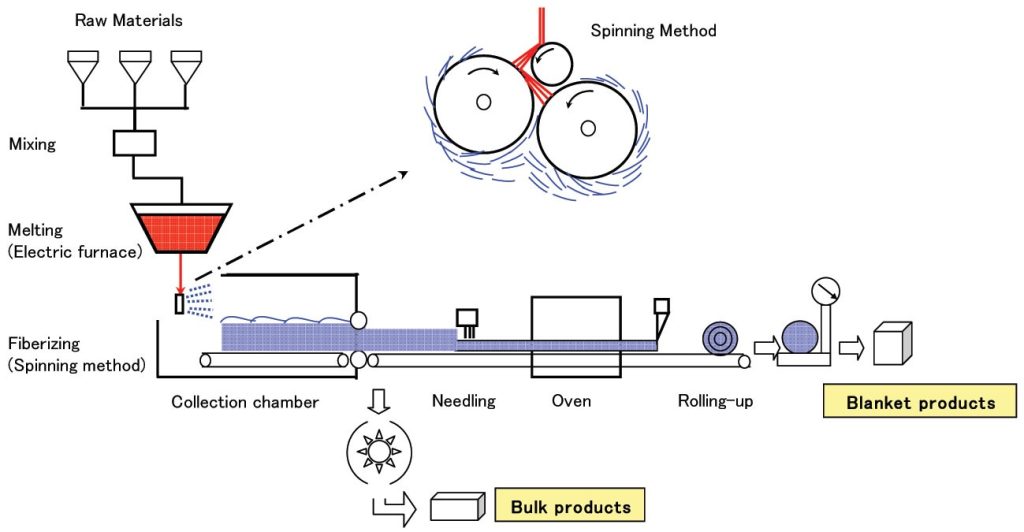
The Fiber-Forming Process
1. High Temperature Resistance
- 1. High-Temperature Melting
- The raw materials are melted at approximately 2,000°C in a high-efficiency furnace, creating a uniform molten mixture.
2.Fiber Formation Methods
- There are two main methods to form ceramic fibers:
- Spinning Method: The molten mixture is ejected through a nozzle onto high-speed rotors. Centrifugal force stretches the molten droplets into long fibers, producing bulk ceramic fiber material.
- Blowing Method: Compressed air or steam is used to blow the molten mixture into fibers, resulting in a fine, fluffy bulk fiber.
3.Needling and Lubrication
- The bulk fibers are lubricated and mechanically needled to increase structural integrity. This step ensures the fibers are interlocked, giving the material strength and flexibility.
4.Heat Treatment
- The lubricant is removed through controlled heating, leaving behind a finished ceramic fiber blanket or other fiber-based products.
Characteristics of Vitreous Ceramic Fiber
- High service temperature (up to 1,430°C depending on grade)
- Low thermal conductivity, providing superior insulation
- Lightweight yet strong, reducing furnace load
- Excellent thermal shock resistance, suitable for rapid heating and cooling cycles
- Chemical stability, resistant to most corrosive environments
Applications of Vitreous Ceramic Fiber
- Vitreous ceramic fibers are widely used in:
- Industrial furnace linings
- Kiln insulation and seals
- Boiler and heater insulation
- Petrochemical and metallurgical equipment
- Fire protection and thermal barriers
- These properties make vitreous ceramic fiber an essential material for industries seeking energy efficiency and long-term reliability in high-temperature environments.
Conclusion
The manufacturing process of vitreous ceramic fiber—from raw material selection to high-temperature melting, spinning or blowing, and final heat treatment—ensures the production of lightweight, durable, and efficient insulation materials. With service temperatures up to 1,430°C, vitreous ceramic fiber has become a trusted solution in modern industrial insulation.
👉 Contact Hengrui High Temperature Company today to learn more about our vitreous ceramic fiber products and customized insulation solutions.

